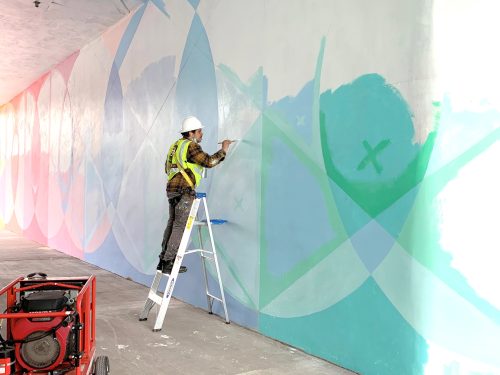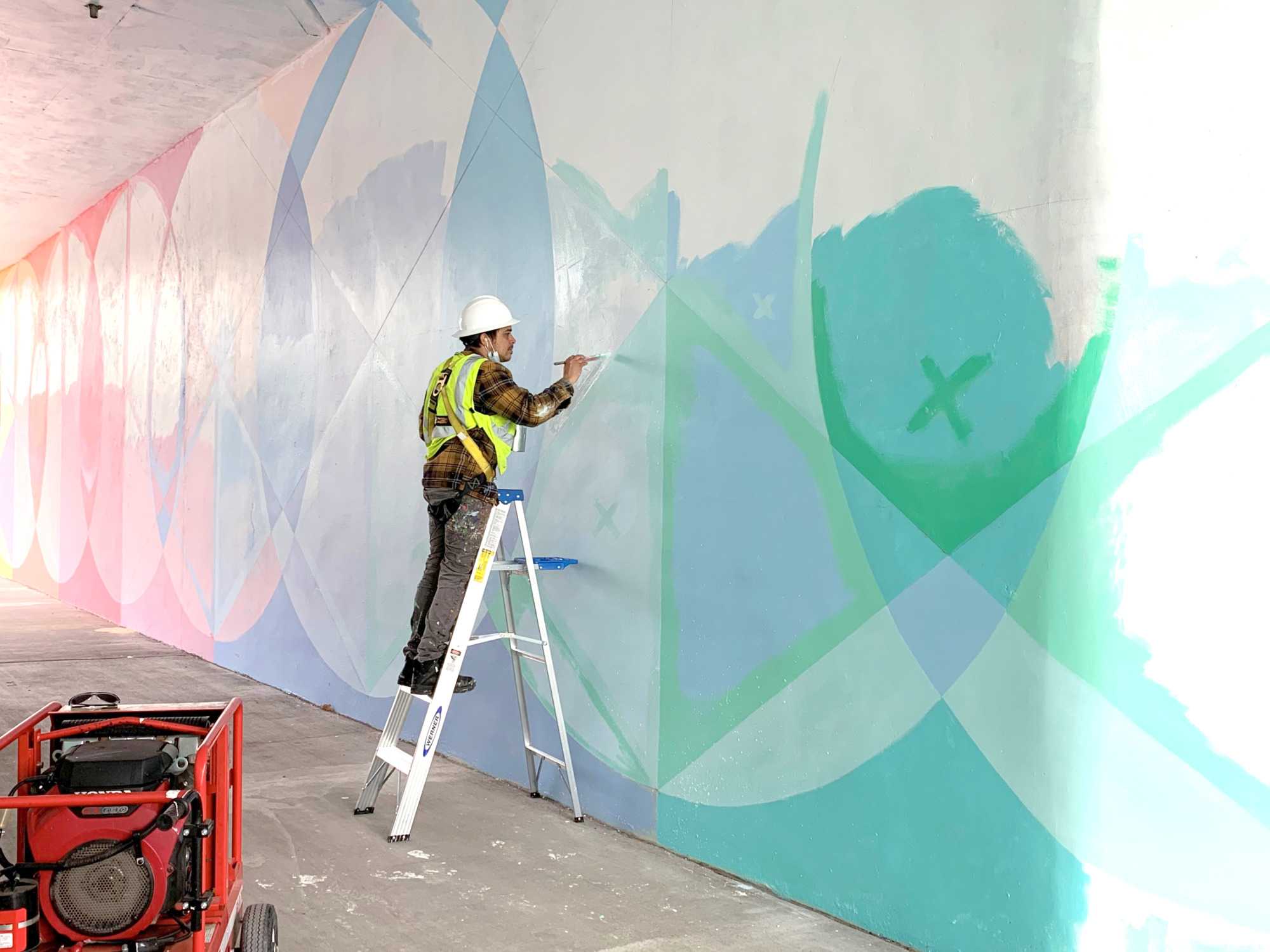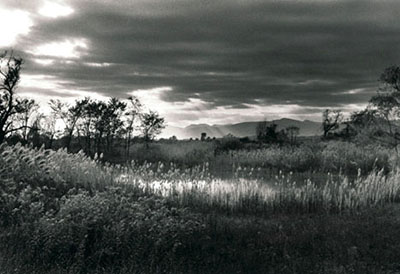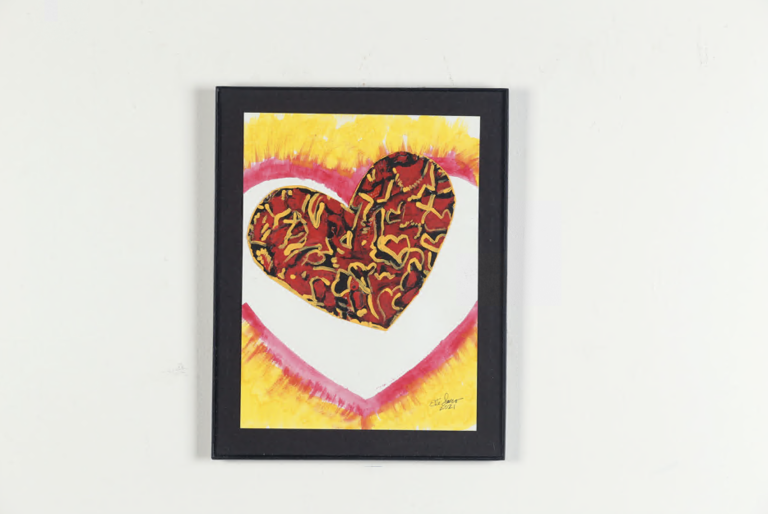The Ephemeral Nature of Things

Five days a week, artist Chris Soria hops on his silver bicycle at 7 a.m. and takes a five-minute ride from his Nyack home to an underpass on the Rockland County side of the Governor Mario M. Cuomo Bridge. On the way, he picks up coffee and breakfast sandwiches for himself and three friends who are helping with his latest mural project, The Flux of Being.
“It’s a balancing act the rest of the way,” Soria jokes.
After breakfast, he and his crew get to work on Soria’s colorful 4,000-square-foot mural that depicts the flora and fauna of the Hudson Valley parading across a geometric background.
Soria, 40, was one of eight artists chosen to create 10 commissioned artworks on or near the bridge’s 3.6-mile-long shared pedestrian and bicycle path. The artwork selection committee, which included representatives from ArtsWestchester, Arts Council of Rockland and the New York State Thruway Authority, reviewed more than 100 applications before choosing the winners.
Painting a mural this large takes a lot of work—hence the helpers. Soria is being assisted by three artists from the metro area. The foursome suits up in helmets, masks and coveralls before they get to work. They use hand sanitizer and maintain social distancing as they navigate the South Nyack underpass. Soria, who has painted many outdoor murals before, says the team is undisturbed during their seven-hour workday because the path is not yet open to the public. “It has its advantages,” he says. “I like public interaction, but it can really prolong the process.”
The mural fills the walls and ceiling of the tunnel, extending to the surfaces that flare out at both entrances. It features trees, animals, plants, insects, fish, birds, fungi, reptiles and mollusks in a brilliant color palette.
“In the design, I play with the scale of these specimens—in some cases increasing the size of smaller subjects, such as leaves and insects, and decreasing the size of larger forms, such as bears and trees,” he says, which he hopes will let viewers relate to these creatures in new ways.
Fabricating a mural requires a number of steps: priming the surface, sketching the design, painting it and adding UV and anti-graffiti coating. Using water-based latex paint, Soria colors the fauna and flora first and the abstract geometrical background second. “I’m painting around the deer instead of painting the deer on abstract geometry,” he explains. The mural is 16 feet high, which requires him to be harnessed and lifted on scaffolding.
“My mural process often involves the use of a variety of mediums that precede fabrication of the actual mural painting,” he says. “So while the mural is made with brushes and paint, it’s fair to say that it is also created with pencil, pen, scissors, glue, paper, computer and a bunch of materials that may not appear in the physical mural, but certainly get it where it’s going.”
Soria, who earned his BFA at Parsons School of Design, has been painting murals for 15 years. He’s also one half of Maniac Pumpkin Carvers, a company that creates elaborately carved pumpkins for television, corporate events and live audiences.
While carved pumpkins survive for only a week and a mural can last for decades, Soria sees a connection to his current project. “Even though the mural is more or less permanent, one of its primary subjects is the ephemeral nature of things,” he says.
A version of this article first appeared in the May issue of ArtsNews, ArtsWestchester’s monthly publication. ArtsNews is distributed throughout Westchester County. A digital copy is also available at artsw.org/artsnews.
About Michelle Falkenstein
Michelle Falkenstein writes about culture, food and travel. Publications include The New York Times, Journal News, Albany Times Union, ARTnews Magazine and (201) Magazine






